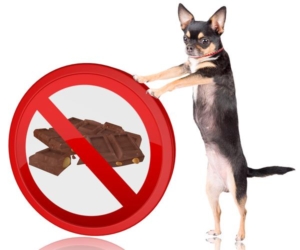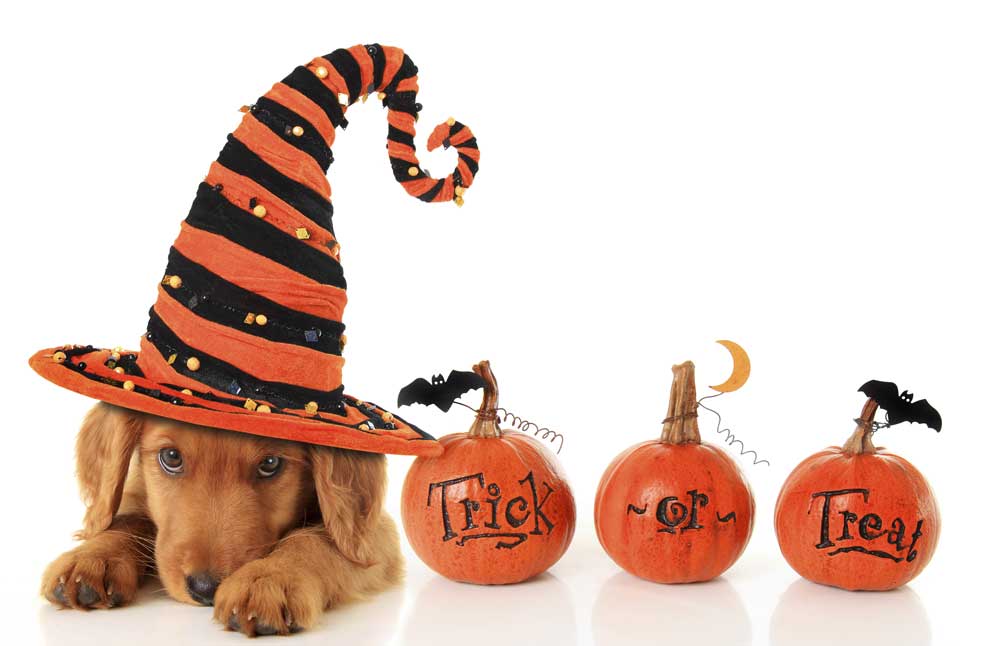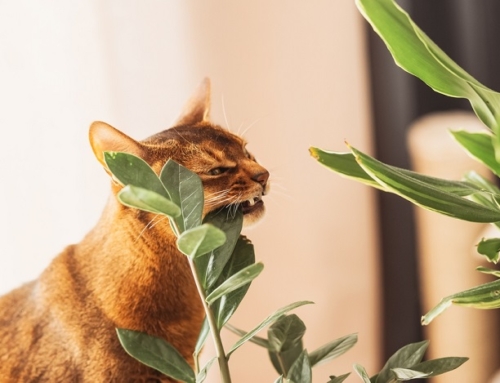Trick or treat, happy healthy pet owners! Halloween is a time of year where fear and fun go hand in hand.
Parents will be extra vigilant to ensure kids can enjoy the festivities in a safe manner, and their pets will also need extra supervision during this candy-centric month. Certain foods that we enjoy just are not intended for pets, and dogs are especially at risk of ingesting a food that causes toxicosis.
 What does it mean for a food substance to be toxic to our pets? Whether it is absorbed in their digestive tract, inhaled, or introduced via skin/eye contact, a toxic substance travels through the circulatory system and puts a burden on the animal’s kidneys and/or liver. These organs attempt to detoxify the body by metabolizing and excreting the toxins (through urine and saliva) but too much of a toxic substance can cause organ damage and even death.
What does it mean for a food substance to be toxic to our pets? Whether it is absorbed in their digestive tract, inhaled, or introduced via skin/eye contact, a toxic substance travels through the circulatory system and puts a burden on the animal’s kidneys and/or liver. These organs attempt to detoxify the body by metabolizing and excreting the toxins (through urine and saliva) but too much of a toxic substance can cause organ damage and even death.
With Halloween around the corner, let’s review some of the most prevalent toxic risks that our pets might sniff out.
Chocolate bars
 You know this one had to come first! This treat will be enjoyed in mini-chocolate bar form all month long and will be in easy reach of curious pets at Halloween. Dogs are the most frequent victims of chocolate toxicosis and it only takes a couple missing mini-bars to have serious consequences.
You know this one had to come first! This treat will be enjoyed in mini-chocolate bar form all month long and will be in easy reach of curious pets at Halloween. Dogs are the most frequent victims of chocolate toxicosis and it only takes a couple missing mini-bars to have serious consequences.
Chocolate contains two main toxic components: theobromine which gives cocoa its bitter taste, and caffeine, which is a stimulant. Cocoa powder and dark chocolate contain higher percentages of these toxic components than milk chocolate bars.
Chocolate in any form can cause heart arrhythmias and seizures if consumed in high amounts. Eaten in small amounts, chocolate can result in vomiting, diarrhoea and excessive drinking of water. If you notice ANY of these symptoms and suspect chocolate could be the culprit, your dog will need veterinary support.
Marijuana
Here in Canada, adults are now able to enjoy recreational pot legally! While we might expect a more wild Halloween for the grown-ups this year, responsible handling of drugs cannot be overlooked. Even carefully stored weed that is put out of a child’s reach can still leave a tempting scent and residue that dogs cannot resist.
Most marijuana toxicosis in pets happens as a result of ingestion of the plant substance, and the main psychoactive agent that affects people and animals is called THC. Within 30-90 minutes of ingestion by a dog, the THC is metabolized by the liver and a variety of symptoms are observed. Most commonly, dogs become depressed, “ataxic” or uncoordinated, and their heart rate and body temperature drop. Hypersalivation and urinary incontinence (uncontrollable and continuous peeing) are some dead giveaways when the culprit of toxicity is unknown, as well as vomiting and diarrhoea. Severe reactions may result in seizures and coma.
Dogs need supportive care for 72 hrs after symptoms of marijuana toxicosis are present. Your veterinarian can provide supportive care: help counter the effects through medication, induce vomiting when appropriate, and hydrate with I/V fluids. Otherwise, the dog should be kept warm and hydrated, and stay under the observation of owners to help them avoid injury while disoriented until they recover from the drug.
Raisins
 Here is another holiday favourite that will be found leftover in the bottom of every trick-or-treater’s loot bucket. Chocolate coated “Glosette” raisins and those little red boxes by “Sun-Maid” may not be a favourite among kids, but please make sure they are not feeding the candy-equivalent of broccoli under the table to the family dog.
Here is another holiday favourite that will be found leftover in the bottom of every trick-or-treater’s loot bucket. Chocolate coated “Glosette” raisins and those little red boxes by “Sun-Maid” may not be a favourite among kids, but please make sure they are not feeding the candy-equivalent of broccoli under the table to the family dog.
Raisins and their ancestor the grape are a mysterious source of toxicosis in dogs: it is unknown what component is dangerous, but it is well documented that ingestion can damage their kidneys. The amount eaten seems to affect many dogs differently, but as few as 3-4 grapes have been observed to cause lethal damage, and senior dogs with existing kidney disease would be more at risk.
Symptoms of grape toxicosis appear within 6 – 12 hrs of ingestion and include vomiting, diarrhoea, lethargy, loss of appetite and dehydration. As the toxicosis becomes more severe, dogs will develop anuric renal failure, which is the last stage of kidney disease as the organs fail and death follows. Grape toxicosis can be very serious and dogs will need emergency veterinary support and blood testing if you see any of the symptoms following ingestion.
Xylitol (found in sugar-free candy)
This final addition could be deemed a hidden threat since it is used as a sugar-replacer in candy, gum and prepared foods catered to the dieting crowd and/or diabetics. If you are providing an artificially sweetened alternative for a child this Halloween, this is another treat that must be kept out of reach of the dog. Xylitol is a sugar alcohol that actually has a hypoglycemic effect in dogs, where insulin is triggered to release and blood sugar drops below normal levels. As with grape toxicosis, the exact mechanism is not well understood, but xylitol can lead to “hepatic” liver failure.

Symptoms of xylitol toxicosis develop very quickly, within 30 minutes of the food being eaten, and include vomiting, weakness, discoordination, and depression. In severe cases, seizures and coma may follow. Liver failure shows similar symptoms, as well as icterus or jaundice (yellow or green pigmentation of the skin, mucous membranes and eyes) and coagulopathy, which is when the animal’s blood fails to coagulate or clot properly.
A dog that has consumed xylitol-sweetened treats needs veterinary support to raise their blood sugar levels quickly, using an I/V drip of dextrose fluids. The blood glucose level will have to be monitored every couple of hours until the dog is able to maintain normal levels on their own. Blood testing can also reveal if liver damage is present and whether further treatment is needed.
To close with a note to parents and guardians this Halloween, have a conversation with children about the safety of sharing their candy with pets. Maybe provide them with a treat alternative for the family dog to share, like the adorable holiday cookies that most pet stores have available.
And to those excited to partake in legalized cannabis in all its forms, please make sure you use sealed containers and clean up any items that might have residue left on them. Happy Halloween!






